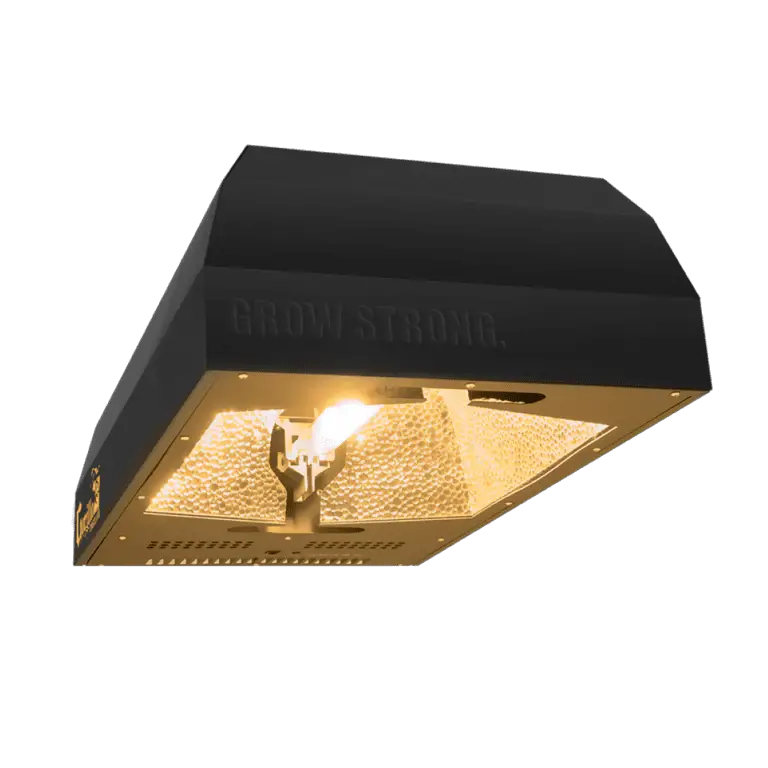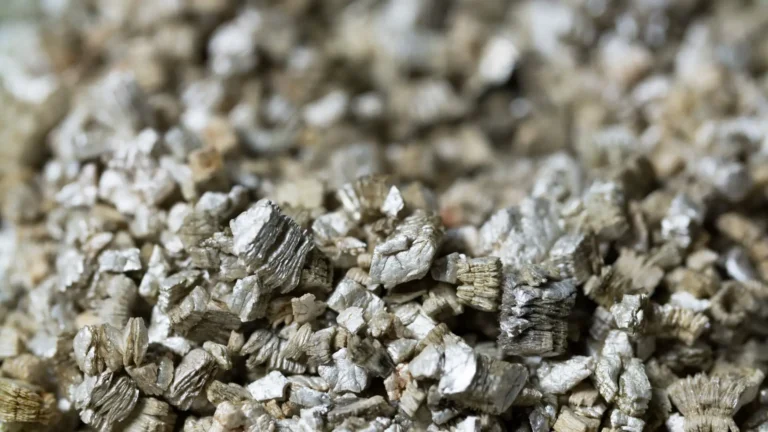Unraveling the COB LED Grow Light Technology
Did you know that COB LED grow lights can increase your indoor garden’s yield by up to 30%? That’s right, these powerful lights are revolutionizing the way we grow plants at home. But what exactly is COB LED grow light technology, and how does it work?
As a professional writer, I’ve done my research to bring you the latest information on this exciting topic. COB LED grow lights use Chip-On-Board technology, which involves mounting multiple LED chips directly onto a single substrate. This results in a high-density, energy-efficient light source that can deliver more light to your plants, promoting faster growth and higher yields.
By the end of this post, you’ll have a better understanding of COB LED grow light technology and how it can benefit your indoor garden. So let’s dive in and unravel the mystery of COB LED grow lights!
Table of Contents
The Evolution of LED Grow Lights
From their humble beginnings as simple red and blue lights, LED grow lights have undergone a remarkable evolution. With advancements in technology and the growing demand for efficient indoor farming solutions, LED grow lights have quickly become the go-to lighting option for modern horticulturists. Today, these lights offer a wide range of benefits and features, promising optimal plant growth and maximum yield.
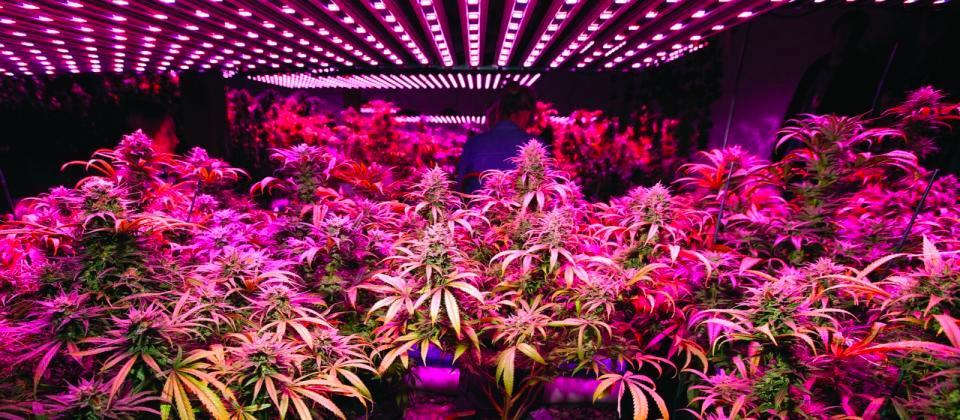
One frequently asked question is, “How have LED grow lights evolved over time?”
The answer lies in the development of more sophisticated LED chips, which are now capable of producing a broader spectrum of light. In the early days, LED grow lights predominantly emitted red and blue wavelengths, targeting only specific stages of plant growth. However, advancements in chip design now allow for a wider spectrum range, including green, ultraviolet, and far-red wavelengths. This expanded spectrum not only enhances photosynthesis but also improves overall plant health and morphology. Additionally, LED grow lights have become more energy-efficient, providing growers with a cost-effective and sustainable lighting solution.
Having utilized the California Light Works SolarXtreme COB LED Grow Light Fixture, I can attest to its remarkable performance in supporting indoor plant growth. The advanced COB LED technology delivers a full spectrum of light, ensuring optimal development from seedling to flowering stages. Its energy-efficient design reduces electricity costs while providing powerful illumination, and the durable construction ensures long-lasting use. Though it may have a higher price point, the results justify the investment, making it an indispensable tool for indoor gardeners seeking superior plant growth and health.
- Advanced Technology: The California Light Works SolarXtreme COB LED Grow Light Fixture features cutting-edge COB LED technology, providing efficient and effective lighting for indoor plant growth.
- Full Spectrum: With a full spectrum of light wavelengths, this fixture ensures that plants receive the optimal light spectrum for all stages of growth, from seedling to flowering.
- Energy-Efficient: COB LED technology is known for its energy efficiency, helping to reduce electricity costs while still delivering powerful illumination to plants.
- Durable Construction: Constructed with high-quality materials, this grow light fixture is durable and built to withstand the rigors of indoor gardening environments.
- Easy to Use: The fixture is designed for simple installation and operation, making it accessible to both novice and experienced indoor gardeners.
- Higher Price Point: Compared to traditional grow lights, the California Light Works SolarXtreme COB LED Grow Light Fixture may have a higher upfront cost, which could be a deterrent for budget-conscious growers.
- Limited Coverage: Depending on the model and size of the fixture, coverage area may be limited, requiring multiple units for larger indoor gardening setups.
- Potential for Light Burn: As with any grow light, improper positioning or prolonged exposure can lead to light burn on plants, requiring careful monitoring and adjustment of light intensity and distance.
The Basics of COB LED Technology
FAQs:

What does COB stand for in COB LED technology?
COB stands for Chip-on-Board. In COB LED technology, multiple LED chips are mounted directly onto a single substrate, creating a powerful and efficient light source. This compact design allows for better thermal management and increased light output.
Are COB LED lights better than traditional LED lights?
COB LED lights offer several advantages over traditional LED lights. Due to their design, COB LEDs provide higher lumen per watt output, resulting in greater energy efficiency. Additionally, the all-in-one nature of COB LED technology eliminates the need for individual LED lens, resulting in a more uniform and smooth light output. COB LEDs also offer better heat dissipation, leading to longer lifespans and improved reliability.
How COB LED Grow Lights Work
COB LED grow lights utilize Chip-on-Board technology to provide an efficient and powerful lighting solution for indoor gardening.

- The COB technology involves multiple LED chips mounted closely together on a single circuit board.
- This design allows for a higher wattage output with improved energy efficiency.
- One unique aspect of COB LED grow lights is their ability to produce a high-intensity light in a concentrated beam.
- This focused light provides targeted illumination to plants, ensuring maximum light absorption.
- Additionally, the close placement of multiple LED chips enhances the uniformity of the light distribution, minimizing shadowing and hotspots.
- This uniformity is crucial for even plant growth and avoids potential stunted development due to inadequate light exposure in certain areas.
Advantages of COB LED Grow Lights over Traditional Lighting Systems
COB LED grow lights offer several key advantages over traditional lighting systems in indoor gardening.

Compact size and high power output make COB LED lights efficient.
Densely packed LED chips provide intense and focused light, ideal for plant growth.
Concentrated light output maximizes energy utilization for faster growth and higher yields.
COB LED grow lights have a longer lifespan compared to traditional lighting systems.
High-quality materials make them resistant to heat and moisture, reducing the risk of premature burnout.
While COB LEDs do emit some heat, their advanced heat dissipation systems keep temperatures under control.
Heat output is significantly lower than that of traditional lighting systems.
This ensures optimal light intensity for plants while maintaining a stable growing environment.
Key Features to Look for in COB LED Grow Lights

- Consider the wattage and power output of COB LED grow lights, as higher wattage can provide more intense light for promoting photosynthesis and plant growth.
- Select a grow light with a wattage range suitable for your indoor gardening needs.
- Look for a COB LED grow light that offers a full spectrum of light, including blue and red wavelengths.
- Blue light is essential for vegetative growth, while red light promotes flowering and fruiting.
- Ensure the grow light provides a balanced spectrum to meet the specific light requirements of your plants at different growth stages.
The following explain the key features of COB LED Grow lights for gardens:
| Feature | Quantitative Value |
|---|---|
| 1. Spectrum Coverage | – Full spectrum with emphasis on blue and red wavelengths. |
| 2. Light Intensity (PPFD) | – Adequate PPFD values for different growth stages (e.g., 400-600 µmol/m²/s for vegetative, 600-800 µmol/m²/s for flowering). |
| 3. Power Consumption | – Energy-efficient with power consumption |
| 4. Lifespan | – Long lifespan |
| 5. Cooling System | – Effective cooling system to maintain optimal operating temperatures. |
| 6. Dimmability | – Dimmable options for adjusting light intensity as needed. |
| 7. Coverage Area | – Appropriate coverage for the garden size |
| 8. Heat Output | – Low heat emission to prevent damage to plants. |
| 9. Durability | – Robust construction for durability in garden environments. |
| 10. Brand Reputation | – Positive reviews and reputation within the gardening community. |
Understanding Light Spectrum and its Impact on Plant Growth
Light spectrum plays a crucial role in the growth and development of plants, influencing various physiological processes such as photosynthesis, photomorphogenesis, and photoperiodism. Here’s a breakdown of the light spectrum and its impact on plant growth:
Visible Light Spectrum:
- The visible light spectrum ranges from violet to red wavelengths, with violet having the shortest wavelength and red the longest.
- Plants primarily absorb light in the blue (400-500 nm) and red (600-700 nm) regions of the spectrum.
Blue Light (400-500 nm):
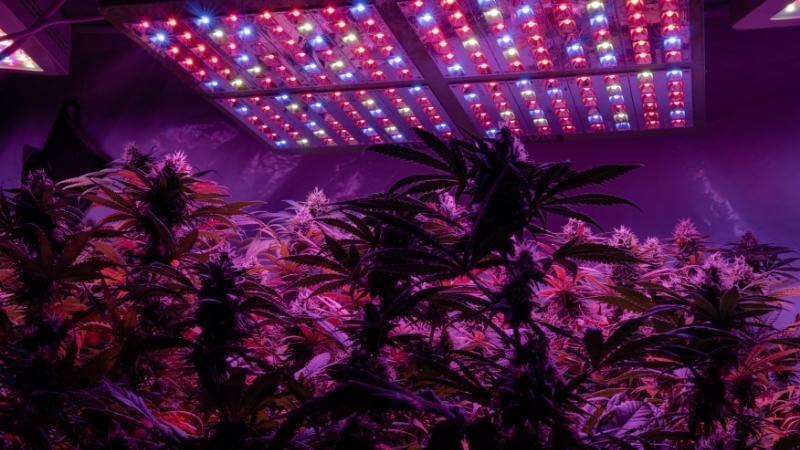
- Blue light is essential for vegetative growth and promotes several key processes, including chlorophyll synthesis, stomatal opening, and phototropism.
- It plays a crucial role in regulating plant morphology, promoting compact growth, and enhancing leaf expansion.
Red Light (600-700 nm):
- Red light is crucial for flowering and fruiting in plants, stimulating the production of flowering hormones like gibberellins and promoting the transition from vegetative to reproductive growth.
- It also influences stem elongation and overall plant architecture, helping to regulate plant height and internode spacing.
Far-Red Light (700-800 nm):
- Far-red light is involved in various photomorphogenic responses, including seed germination, shade avoidance, and the regulation of flowering time.
- It interacts with the phytochrome photoreceptor system to regulate various developmental processes and influence plant growth.
Light Quality and Plant Responses:
- Different light qualities trigger specific physiological responses in plants, influencing their growth and development.
- The ratio of blue to red light, known as the R:FR ratio, can affect processes such as stem elongation, leaf expansion, and flowering induction.
Optimizing Light Spectrum for Plant Growth:
- Providing a balanced spectrum of light, including both blue and red wavelengths, is essential for promoting overall plant growth and development.
- LED grow lights with customizable spectral outputs allow growers to tailor light conditions to meet the specific requirements of different plant species and growth stages.
- By understanding the importance of light spectrum and its impact on plant physiology, growers can optimize light conditions to maximize plant health, yield, and quality.
FAQ 1: What is the role of different light spectrums in plant growth?
Plants require a range of light spectrums to carry out photosynthesis effectively. The light spectrum consists of different colors, each with its unique wavelength and energy level. Blue light, for instance, is crucial in promoting vegetative growth, while red light is essential for flowering and fruiting stages. Additionally, plants also require a small amount of green light for optimal growth. Green light is not easily absorbed by plants, but it helps in the overall development by penetrating deeper into the plant canopy. Understanding the different spectrums of light and their impact on plant growth is vital in setting up an efficient and productive indoor garden.
FAQ 2: Can COB LED grow lights provide a full spectrum of light for plant growth?
Yes, COB LED grow lights are capable of providing a full spectrum of light for plant growth. COB stands for Chip-on-Board, a technology that allows multiple LED chips to be mounted on a single module. With this configuration, COB LED grow lights can incorporate different color chips to emit a wide range of light spectrums. Manufacturers often design their COB LED grow lights to produce a balanced ratio of blue, red, and green light, mimicking natural sunlight. This ensures that plants receive the necessary light spectrums throughout different growth stages, promoting healthy and robust plant growth.
In summary, light spectrum plays a pivotal role in regulating plant growth and development, influencing processes such as photosynthesis, flowering, and morphology. By providing the right balance of blue and red light, growers can create optimal growing conditions to support healthy and vigorous plant growth.
The Role of COB LED Grow Lights in Optimizing Photosynthesis
COB LED grow lights have emerged as a game-changer in the field of indoor gardening, thanks to their remarkable role in optimizing photosynthesis.
- As we all know, photosynthesis is the metabolic process by which plants convert light energy into chemical energy, ultimately resulting in the production of glucose and oxygen.
- The role of COB LED grow lights in this process is to provide the necessary light spectrum and intensity for plants to carry out photosynthesis efficiently.
- One frequently asked question is whether COB LED grow lights emit the right light spectrum for photosynthesis.
- The answer is a resounding yes. COB LED grow lights are designed to emit a broad spectrum of light, including the specific wavelengths that plants need for various stages of growth.
- These lights can be customized to provide the perfect balance of blue, red, and white light, ensuring that plants receive the optimal spectrum for photosynthesis.
- This ability to fine-tune the light spectrum makes COB LED grow lights highly effective in maximizing the growth and development of plants in indoor gardening setups.
Maximizing Energy Efficiency with COB LED Grow Lights
With the increasing concern for sustainable and energy-efficient practices, maximizing energy efficiency in indoor gardening has become a priority for many growers.

Compact size and high power output make COB LED lights efficient.
Densely packed LED chips provide intense and focused light, ideal for plant growth.
Concentrated light output maximizes energy utilization for faster growth and higher yields.
COB LED grow lights have a longer lifespan compared to traditional lighting systems.
High-quality materials make them resistant to heat and moisture, reducing the risk of premature burnout.
While COB LEDs do emit some heat, their advanced heat dissipation systems keep temperatures under control.
Heat output is significantly lower than that of traditional lighting systems.
This ensures optimal light intensity for plants while maintaining a stable growing environment.
By consolidating multiple LED chips onto a single circuit board, COB LED grow lights can deliver high-intensity light output while minimizing energy consumption. This innovative design ensures that the majority of energy is converted into light, rather than wasted as heat. As a result, COB LED grow lights can provide significant energy savings, making them an environmentally friendly choice for indoor gardening.
The Importance of Uniform Light Distribution in Indoor Gardening
When it comes to indoor gardening, achieving uniform light distribution is of utmost importance. But why is it so crucial? Well, plants need light for photosynthesis, which is the process that allows them to convert light energy into chemical energy to fuel their growth.
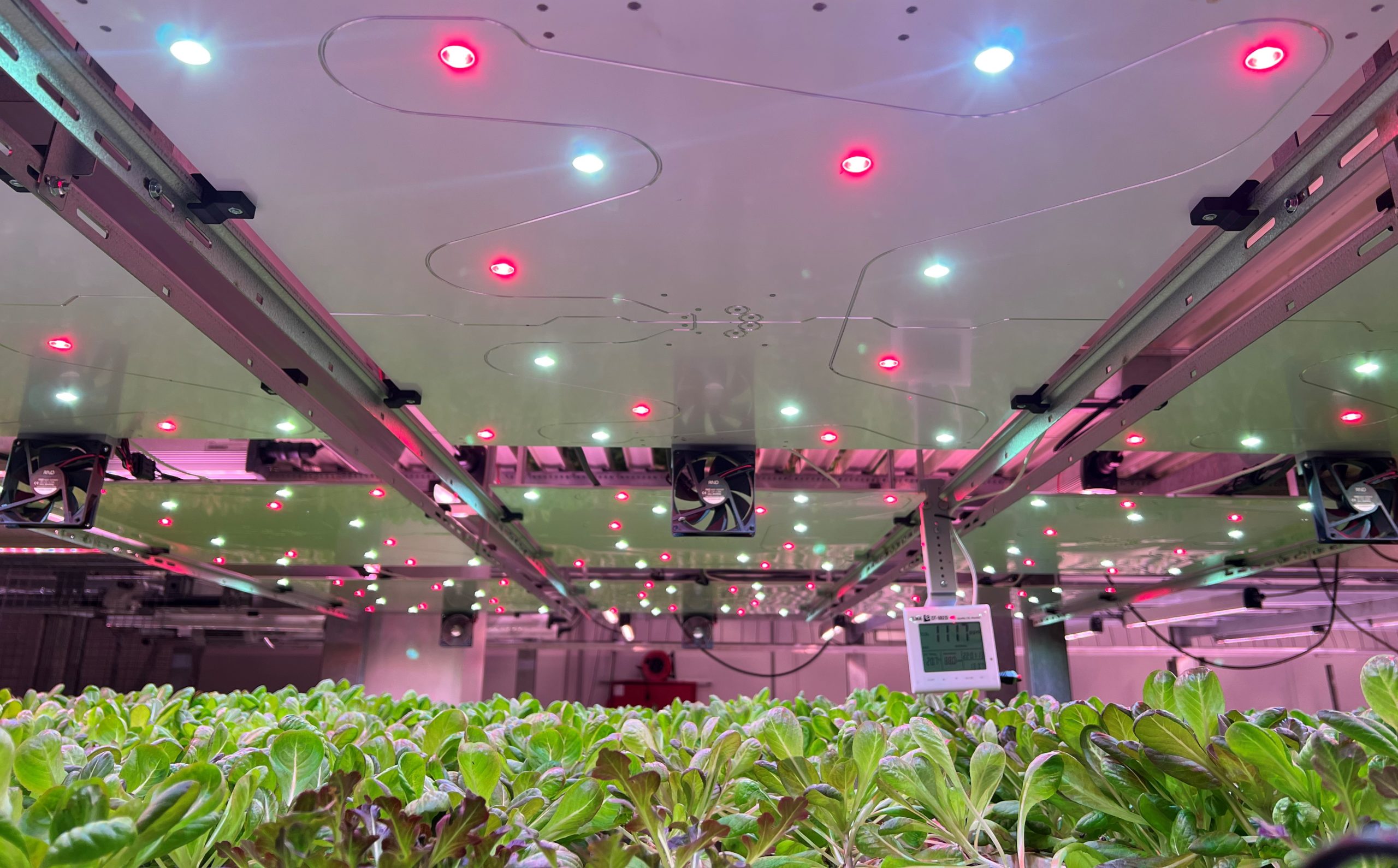
- Selecting the Right Lighting System: Choose a COB LED grow light system for your indoor garden due to its ability to provide even light distribution compared to traditional lighting systems. COB LED lights use Chip-on-Board technology where multiple LED chips are grouped together into a single module, ensuring efficient and uniform light distribution.
- Understanding the Importance of Uniform Light Distribution: Plants require light for photosynthesis, the process that converts light energy into chemical energy for growth. To ensure efficient photosynthesis, plants need a consistent and balanced supply of light throughout their growth cycle. Uneven light distribution can lead to unequal growth, stunted development, and challenges in achieving desired crop yield and quality.
- Benefits of COB LED Grow Lights: COB LED lights offer a more even spread of light, covering a larger area with consistent lighting levels. This uniform distribution promotes healthier plant growth and higher productivity in indoor gardens.
- Implementation Steps:
- Step 1: Acquire the necessary materials for a COB LED grow light system, including the COB LED lights, fixtures, and any additional components.
- Step 2: Set up the COB LED lights in a way that ensures uniform coverage over the entire indoor garden area.
- Step 3: Adjust the height and positioning of the COB LED lights to optimize light distribution and intensity for different plant types.
- Step 4: Monitor the plants regularly to ensure they are receiving adequate and uniform light, making adjustments as needed to maintain optimal growth conditions.
- Step 5: Maintain the COB LED lights by replacing any worn-out components and ensuring they are functioning effectively to continue providing uniform light distribution for the indoor garden.
FAQs:
– Can I use multiple COB LED grow lights to ensure uniform light distribution in a large indoor garden?
Yes, using multiple COB LED grow lights can indeed help achieve a more uniform light distribution in a larger indoor garden. By strategically placing multiple lights at different angles and heights, you can ensure that the entire garden is properly illuminated. Additionally, using grow tents or reflective materials around your plants can also further assist in evenly distributing light.
– Can I rely on the manufacturer’s specifications to determine the light distribution from COB LED grow lights?
While manufacturer specifications can provide some guidance on the light distribution of COB LED grow lights, it is always recommended to test the lights in your specific growing environment. Factors such as the height of the light fixtures, the distance between the light source and the plants, and the reflective properties of your grow space can all impact the actual distribution of light. It is always advisable to experiment and adjust the positioning of the lights to achieve the desired uniformity in your indoor garden.
COB LED Grow Lights and Their Effect on Plant Morphology
COB LED grow lights are known for their ability to greatly impact plant morphology in indoor gardening. With their advanced technology and precise light spectrum, these lights have the potential to enhance various aspects of plant growth, including leaf size, stem thickness, and overall plant structure.
COB LED grow lights provide the right balance of red and blue light.
Stimulate production of phytochrome proteins, crucial for branching and lateral growth.
Result: Plants exhibit denser foliage and a more compact growth habit.
Emit specific wavelengths of light that trigger physiological responses in plants.
Manipulate light spectrum and intensity to encourage earlier and more abundant flowering.
Result: Increased fruit set and quality, optimizing reproductive stages for maximum yield.
By manipulating the light spectrum and intensity, growers can encourage earlier and more abundant flowering, leading to increased fruit set and quality. This aspect of COB LED grow lights makes them an excellent choice for indoor gardeners aiming to optimize the reproductive stages of their plants for maximum yield.
Optimal Hanging Height and Coverage Area for COB LED Grow Lights
To achieve optimal growth and maximize the potential of your plants, it is crucial to determine the optimal hanging height and coverage area for your COB LED grow lights. While there is no one-size-fits-all answer to this question, there are some general guidelines that can help you make informed decisions.

- Efficiency and Intensity:
- Compact size and high power output make COB LED lights efficient.
- Densely packed LED chips provide intense and focused light, ideal for plant growth.
- Concentrated light output maximizes energy utilization for faster growth and higher yields.
- Longer Lifespan:
- COB LED grow lights have a longer lifespan compared to traditional lighting systems.
- High-quality materials make them resistant to heat and moisture, reducing the risk of premature burnout.
- Heat Management:
- While COB LEDs do emit some heat, their advanced heat dissipation systems keep temperatures under control.
- Heat output is significantly lower than that of traditional lighting systems.
- This ensures optimal light intensity for plants while maintaining a stable growing environment.
Overall, finding the optimal hanging height and coverage area for your COB LED grow lights requires experimentation and fine-tuning based on the specific needs of your plants. Monitoring plant response and adjusting the height and positioning of the lights accordingly can help you achieve the best possible results in terms of growth, yield, and overall plant health.
The Impact of COB LED Grow Lights on Plant Yield and Quality
COB LED grow lights have gained immense popularity among indoor gardeners and commercial cultivators due to their remarkable impact on plant yield and quality. These advanced lighting systems provide unique benefits that can significantly enhance the overall growth and development of plants.
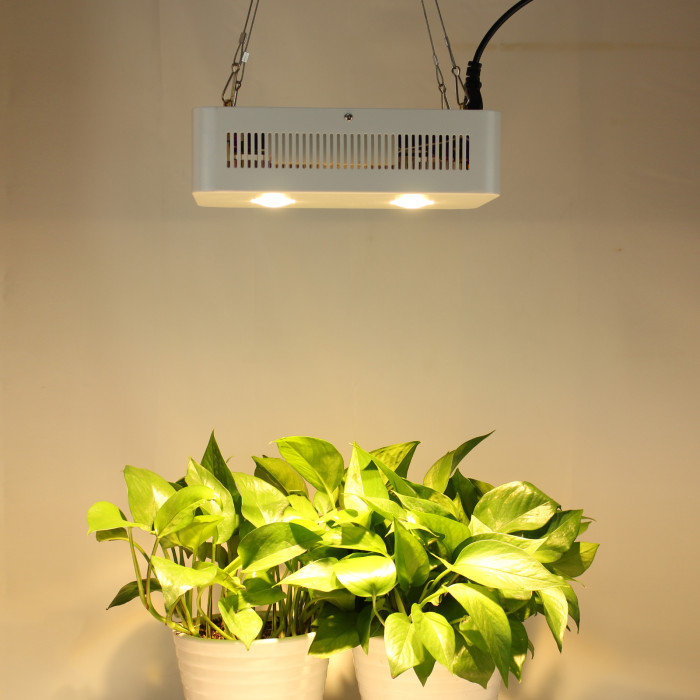
- Understanding COB LED Technology:
- COB stands for Chip On Board. It’s a type of lighting systems where multiple LEDs are mounted on a single board.
- COB LEDs offer a simulated single light source when all the LEDs glow together, unlike traditional lighting systems with separate light sources.
- These lights are becoming popular for indoor cannabis growing due to their reliability and cost-effectiveness compared to HID bulbs.
- COB LEDs emit a full spectrum of light, similar to sunlight (ranging from 410 to 730 nm), which benefits plant growth.
- Increased Yield:
- COB LED grow lights provide optimal light spectrum and intensity throughout plant growth stages.
- This targeted lighting approach boosts photosynthesis efficiency, leading to higher biomass production and increased yields.
- The reduced heat emission allows growers to place the lights closer to the canopy, ensuring plants receive sufficient light.
- Quality Impact:
- Precise control of light spectrum with COB LEDs affects plant morphology and biochemical composition.
- By adjusting factors like internodal spacing, leaf size, and pigmentation, growers enhance visual appeal and market value.
- COB LEDs promote the synthesis of secondary metabolites (e.g., chlorophyll, flavonoids, terpenes).
- These compounds contribute to aroma, taste, and therapeutic potential in crops.
- Overall Benefits:
- Plants grown under COB LED lighting exhibit enhanced flavor profiles and stronger fragrance.
- There’s a potential increase in bioactive compounds due to the specific light spectrums used.
The following table explains about the impact of COB LED Grow Lights on plant yield and quality:
| COB LED Parameters | Impact on Plant Growth | Quantitative Values |
|---|---|---|
| 1. Light Spectrum | – Enhanced photosynthesis and growth. | – Balanced spectrum: 400-700 nm. |
| – Improved flowering and fruiting. | – Red (620-630 nm) / Blue (450-460 nm). | |
| 2. Light Intensity | – Increased energy for robust growth. | – 600-800 µmol/m²/s for vegetative stage. |
| – Promotes higher yields. | – 800-1000 µmol/m²/s for flowering stage. | |
| 3. Light Duration | – Mimics natural daylight for extended periods. | – 16-18 hours/day during vegetative stage. |
| – Controlled day/night cycles for optimal development. | – 12-14 hours/day during flowering stage. | |
| 4. Heat Emission | – Low heat output minimizes stress on plants. | – Temperature increase within 2-5°C. |
| – Suitable for close positioning to plants. | – Reduced risk of heat-related damage. | |
| 5. Energy Efficiency | – Higher efficiency compared to traditional lighting. | – Efficiency rating of 2.0-2.5 µmol/J. |
| – Cost-effective energy consumption. | – Lower energy bills compared to traditional lights. | |
| 6. Light Uniformity | – Even distribution across the garden space. | – Uniformity ratio less than 10%. |
| – Minimizes shadowing for consistent growth. | – Consistent light intensity across plants. |
In conclusion, the impact of COB LED grow lights on plant yield and quality is undeniable. These innovative lighting systems offer precise control over the light spectrum and intensity, leading to improved photosynthetic efficiency and higher yields. Moreover, the ability to fine-tune the light spectrum enhances the visual appeal and biochemical composition of the plants, resulting in superior quality and market value. With the continued advancements in COB LED technology, the future holds even greater promise for indoor gardening and commercial cultivation.
Integrating COB LED Grow Lights with Hydroponic Systems

One of the most common questions regarding the integration of COB LED grow lights with hydroponic systems is whether these lights can be used in all types of hydroponic setups.
The answer to this question is yes. COB LED grow lights can be effectively used in various hydroponic systems, including nutrient film technique (NFT), deep water culture (DWC), and ebb and flow systems. The versatility of COB LED grow lights allows them to provide the necessary light spectra and intensity for optimal plant growth in any hydroponic environment.
Another frequently asked question is whether COB LED grow lights can replace natural sunlight completely in hydroponic systems.
While COB LED grow lights can provide a sufficient light spectrum for plant growth, it is essential to understand that natural sunlight offers additional benefits, such as the full range of light wavelengths, including UV and infrared. Therefore, it is recommended to use COB LED grow lights in conjunction with natural sunlight, especially in larger hydroponic systems or for plants that require a more complex light profile. However, in smaller indoor setups or in regions with limited sunlight, COB LED grow lights can be used as the primary light source for hydroponic cultivation.
Common Mistakes to Avoid when Using COB LED Grow Lights
adequate ventilation
One common mistake to avoid when using COB LED grow lights is failing to provide adequate ventilation. While these lights generate less heat compared to traditional lighting systems, it is still important to ensure proper airflow to prevent overheating. Inadequate ventilation can lead to reduced efficiency and even damage to the lights, inhibiting their ability to deliver optimal light intensity and spectrum for plant growth. To avoid this mistake, make sure to install fans or exhaust systems to maintain a consistent temperature and promote air circulation within the growing area.
importance of light intensity and coverage area
Another mistake to avoid is disregarding the importance of light intensity and coverage area. COB LED grow lights come in various wattages and have different coverage capacities. Failing to choose the right light intensity for a specific growth stage or failing to adjust the hanging height and coverage area accordingly can result in uneven light distribution and inadequate light exposure for your plants. This can lead to stunted growth and poor crop yield. To ensure success, carefully consider the light intensity and coverage requirements of your plants, and adjust the lights accordingly to provide uniform illumination throughout the growth area.
Evaluating the Cost-effectiveness of COB LED Grow Lights
When it comes to evaluating the cost-effectiveness of COB LED grow lights, it is important to consider various factors.
Initial Investment Assessment:
- COB LED grow lights may have a higher upfront cost.
- Proven to be more cost-effective in the long run due to energy-saving capabilities and longer lifespan.
- Reduction in electricity bills and need for frequent replacements.
- Better light coverage and spectrum customization lead to higher crop yields and improved plant quality.
Maintenance and Operating Costs:
- COB LED grow lights require minimal maintenance compared to traditional lighting systems.
- No moving parts or fragile components needing regular inspection or replacement.
- Energy efficiency results in reduced heat emission, decreasing the need for additional cooling systems.
- Cost savings and minimized risk of plant damage from excessive heat contribute to overall affordability.
By considering these aspects, the cost-effectiveness of COB LED grow lights becomes evident, making them a favorable choice for indoor gardening setups.
Future Innovations and Trends in COB LED Grow Light Technology
With the increasing popularity and advancements in LED grow lights, it is evident that we can expect exciting future innovations and trends in COB LED grow light technology.
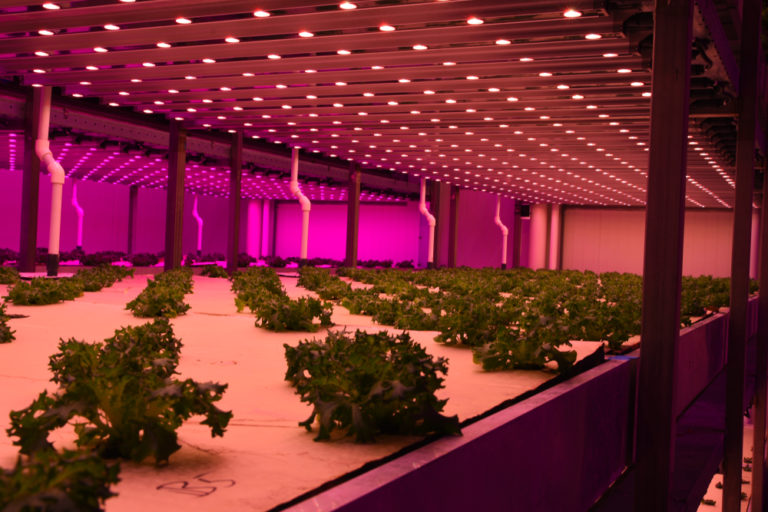
Integration of Artificial Intelligence (AI):
- COB LED grow lights will leverage AI algorithms.
- Automatically adjust light spectrum and intensity based on plant needs.
- Optimization of plant growth and yield while minimizing energy consumption.
Use of Nanotechnology:
- Researchers exploring nanomaterials like quantum dots and carbon nanotubes.
- Enhance performance of COB LED grow lights.
- Enable precise control over light emission for customized spectrums.
- Unique properties lead to increased efficiency and durability.
- Potential for more sustainable and long-lasting lighting systems.
Staying Informed on Innovations:
- Essential to keep up with latest advancements in LED grow light technology.
- Informed decisions about incorporating COB LED grow lights into indoor gardening setups.
- Anticipated integration of AI and nanotechnology promises more precise control and enhanced performance.
- Higher crop yield and quality expected from future developments in COB LED grow light technology.
Watch video for more information:
FAQ
What are COB LED grow lights?
COB LED grow lights are a type of lighting technology used in indoor gardening, specifically designed to provide the necessary light spectrum for optimal plant growth. COB stands for Chip-on-Board, referring to the packaging of multiple LED chips closely together on a single printed circuit board.
How do COB LED grow lights work?
COB LED grow lights work by emitting light in specific wavelengths that are essential for photosynthesis. The LED chips in COB grow lights produce a full spectrum of light, including both red and blue wavelengths, which are vital for plant growth. This artificial light source helps plants receive the necessary light energy for photosynthesis, promoting healthy growth.
What are the advantages of COB LED grow lights over traditional lighting systems?
COB LED grow lights offer several advantages over traditional lighting systems. They provide a higher light output while consuming less energy, resulting in increased energy efficiency. COB LED grow lights also have a longer lifespan, produce less heat, and offer better light intensity and coverage, allowing for more efficient and effective indoor gardening.
What should I look for in COB LED grow lights?
When choosing COB LED grow lights, it is important to consider factors such as light spectrum, wattage, coverage area, hanging height, and heat dissipation. Look for lights that offer a balanced spectrum of red and blue light, have appropriate wattage for your specific plant needs, cover the desired growing area, can be hung at the optimal height, and have effective heat dissipation mechanisms.
What is the role of COB LED grow lights in optimizing photosynthesis?
COB LED grow lights play a crucial role in optimizing photosynthesis by providing the necessary light spectrum for plants to convert light energy into chemical energy. The red and blue wavelengths emitted by COB LED grow lights are essential for stimulating chlorophyll absorption and promoting photosynthetic activity, leading to improved plant growth and development.
How do COB LED grow lights maximize energy efficiency?
COB LED grow lights maximize energy efficiency by converting a higher percentage of electrical energy into light energy compared to traditional lighting systems. They produce less heat, reducing the need for additional cooling systems, and consume less power while providing sufficient light intensity. This energy efficiency helps to lower electricity costs and minimize environmental impact.
Why is uniform light distribution important in indoor gardening?
Uniform light distribution is crucial in indoor gardening as it ensures that all plants receive an equal amount of light, regardless of their position within the growing space. This promotes consistent growth and development across the entire crop, minimizing the risk of uneven plant growth, shading, or light stress. COB LED grow lights are designed to provide uniform light distribution, enhancing overall plant health and productivity.
Can COB LED grow lights be integrated with hydroponic systems?
Yes, COB LED grow lights can be easily integrated with hydroponic systems. The compact design and customizable hanging height of COB LED grow lights make them suitable for various hydroponic setups. They provide the necessary light spectrum for hydroponically grown plants, ensuring optimal growth and nutrient absorption.
How do COB LED grow lights impact plant yield and quality?
COB LED grow lights have a positive impact on plant yield and quality. The specific light spectrum emitted by COB LED grow lights promotes efficient photosynthesis, resulting in increased plant growth, flowering, and fruiting. This leads to higher crop yields and improved quality attributes such as color, taste, and nutritional content.
What are common mistakes to avoid when using COB LED grow lights?
Some common mistakes to avoid when using COB LED grow lights include improper hanging height, inadequate light intensity or coverage, incorrect light spectrum, insufficient ventilation or heat management, and neglecting the light cycle requirements of specific plants. It is important to follow the manufacturer’s guidelines and consider the specific needs of your plants to avoid any potential issues.
Are COB LED grow lights cost-effective?
COB LED grow lights can be considered cost-effective in the long run. While they may have a higher initial cost compared to traditional lighting systems, their energy efficiency and longer lifespan result in lower electricity bills and reduced replacement costs. Additionally, the improved plant growth and higher yields achieved with COB LED grow lights can provide a return on investment by maximizing crop productivity.

Studied Agricultural Engineering-Plant Protection at University of California, Davis.
Head of Content writing team at Southelmontehydroponics.com






